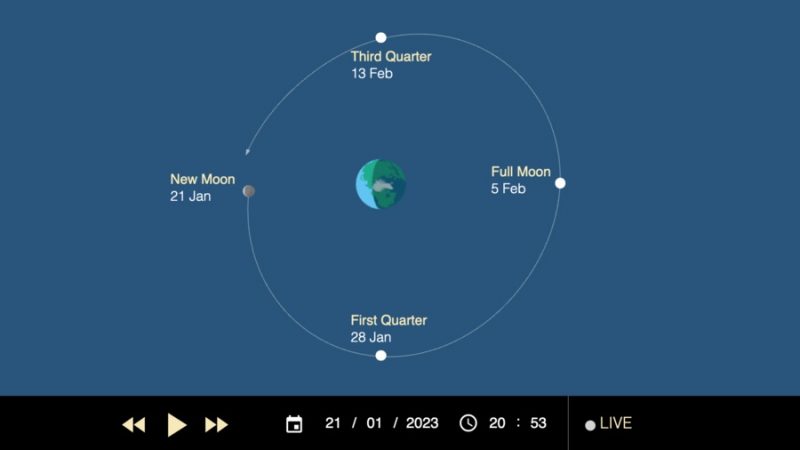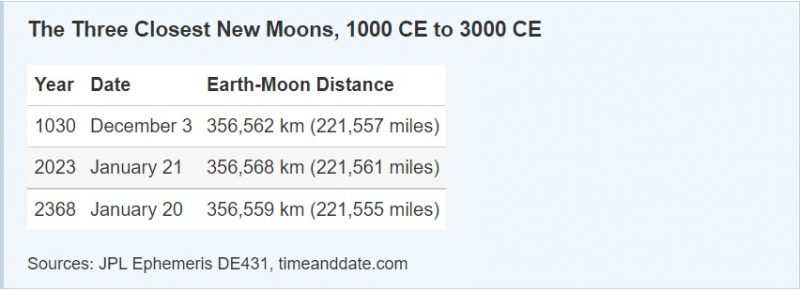
Graham Jones of Timeanddate.com originally published this article on January 17, 2023. Reprinted with permission. Edits by EarthSky.
Closest new moon since the Middle Ages
According to our calculations, on January 21, 2023, the new moon will be at its closest distance to Earth for the last 992 years. The next time the new moon is this close to Earth will be 345 years from now, making this the closest new moon in 1,337 years.
The moon’s orbit around Earth is not a perfect circle. Instead, it has an elliptical shape, like a slightly stretched circle. This means the distance between the moon and Earth changes over the course of a month. The point on the moon’s orbit that is closest to Earth is perigee; the farthest point is apogee.
If perigee or apogee coincides with a new moon or full moon – when the Earth, moon and sun are in alignment – the moon’s closest and farthest distances become more extreme. This leads to the phenomena of supermoons and micromoons, where the moon is particularly near or far away.
The most extreme Earth-moon distances of all occur when Earth is near its closest point to the sun, or perihelion. Currently, perihelion falls around the beginning of January.
Closest new moons of the current era
We looked into the closest Earth-moon distances at new moon over a 2,000-year period and found three new moons where the distance was less than 356,570 km (221,562 miles). Our calculations used the best available figures for the moon’s position over long periods of time. This is a set of data called DE431, produced by the Jet Propulsion Laboratory at the California Institute of Technology.
Please note that, according to this data, there are only a few kilometers’ difference between these distances. You can also see that the three dates fall close to perihelion (around December and January). As a comparison, the farthest Earth-moon distance is typically around 405,000 km (252,000 miles).

Can we see the closest new moon?
So this will be the closest new moon – and also, therefore, the largest – since the 11th century. In practical terms, we won’t be able to see anything, because the new moon is known as the invisible phase: It’s where the moon disappears from view for a few days.
Supermoons and micromoons do have a small effect on tides. And, of course, anything to do with the moon has the potential to fill us with wonder and curiosity.
A weekend of astronomical close encounters
In fact, this will be a weekend of astronomical close encounters. On Sunday, January 22, Venus will appear to pass within 0.34 degrees of Saturn. This is less than the width of a pinky held at arm’s length. Read more about this conjunction.
And on Friday, Jupiter is closest to the sun.
Bottom line: This Saturday’s new moon will be the closest new moon to Earth in a period of 1,337 years.
The post Closest new moon since the Middle Ages first appeared on EarthSky.
0 Commentaires